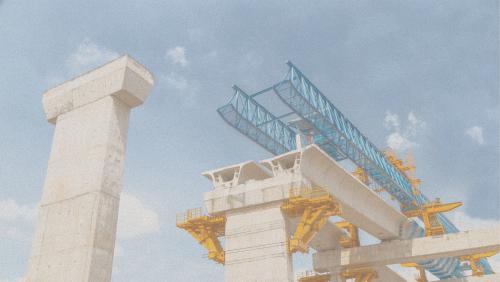This week, the Senate will hold confirmation hearings for President-elect Donald Trump’s nominee to head the U.S. Department of Transportation (USDOT), Elaine Chao. Given Chao’s deep executive experience in both the federal government and private sector, few policymakers question her qualifications for the position. Unlike some of her fellow nominees, all signs point towards a smooth hearing and confirmation vote.
Yet the easy work will end once she gets confirmed.
Already, major currents shaping American governance and prosperity—shifting public finance, rapid technological progress, a transforming labor market, and climate change—are affecting the transportation sector. These currents present Chao and her team with not only enormous opportunities to shape the future of American mobility and prosperity, but also considerable risks of policy failure.
Chao’s immediate challenge will be to run legislative point for the Trump administration’s infrastructure agenda. Even amid Congressional trepidation, signals suggest that Capitol Hill will consider President-elect Trump’s infrastructure finance ideas soon. Meanwhile, Congress must reauthorize aviation legislation by the end of 2017, and doing so will require navigating a sensitive proposal to privatize air traffic control.
Both legislative items concern the role of the private sector in managing and financing infrastructure. But the politics of privatization are never simple. Secretary Chao will need to be especially sensitive to public attitudes in this space, especially if the Congressional Budget Office concludes that these initiatives would increase the federal deficit. The public is quickly beginning to understand how risks are shared around such ventures, and any hint of undue private sector gain could lead to a loss of constituent support.
Chao will have significantly more independence when it comes to addressing the role of digital technology in our built environment. Her predecessor, Secretary Anthony Foxx, established safety and energy priorities for autonomous vehicles, encouraged urban innovation, and built new frameworks for data collection and dissemination. Yet Foxx’s initiatives were just an opening salvo in what will be decades of technological investment and policy experimentation at USDOT. The next Secretary will have a chance to craft their own digital legacy, including revised street designs to accommodate autonomous and shared vehicles, standardize infrastructure sensor technologies, finalize drone regulations, and respond to products not even yet invented. This should be one of the most exciting areas for future leadership.
Relatedly, Chao will also quickly need to develop a forward-looking vision around employment within the transportation sector. Infrastructure jobs are one of the few areas of the economy where workers can earn a living wage or more without advanced education. Yet some of those same jobs are among those most threatened by automation, including long-distance truck driving and many other positions involved in logistics and warehousing. The fact that many transportation workers are nearing retirement is simultaneously putting new demands on workforce training programs to prepare the next wave of vital infrastructure employees. Just as Secretary Foxx recognized the gravity of this issue through the Ladders of Opportunity initiative and other efforts, Chao must continue to grapple with these countervailing forces throughout her tenure. Her experience as Secretary of Labor for President George W. Bush could be an asset when it comes to these job-related issues.
Finally, Chao will be the first Secretary to enter office when transportation can claim the dubious honor of being the top CO2-polluting sector. In contrast to the trend toward greater energy efficiency within the power generation and manufacturing sectors, or the overall decoupling between emissions and economic growth, Americans and their stuff keep traveling more miles, and we power nearly all of that movement via fossil fuels. Chao will thus need to navigate climate change skepticism in the cabinet but still work toward what’s best for our planet’s future. The likely middle path? Emphasizing that electrified transportation is the industry’s future while downplaying the carbon reduction benefits.
Of course, there’s still the overall responsibility to manage a 55,000-person agency with a $75 billion annual budget. That includes administering formula grants to states, evaluating competitive grant programs like TIGER, maintaining our safety standards, and developing new rules. Yet these responsibilities—while significant—impact every USDOT Secretary. For Chao to separate herself, she will need to do all this and more.
Running a federal executive agency is never easy, but if confirmed, Chao will take office at a truly pivotal time. If she can design innovative policies that enhance travel habits via digital technology, put more Americans to work, use private capital to enhance the public good, and clean up our environment, she could ultimately be seen as one of this administration’s most transformative leaders. Stay tuned.
The Brookings Institution is committed to quality, independence, and impact.
We are supported by a diverse array of funders. In line with our values and policies, each Brookings publication represents the sole views of its author(s).








Commentary
How four macro forces will shape Elaine Chao’s tenure as Transportation Secretary
January 10, 2017